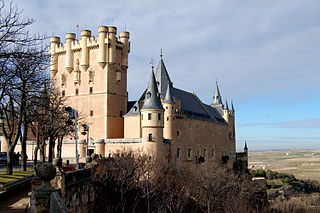
Bracciano is a small town in the Italian region of Lazio, 30 kilometres northwest of Rome. The town is famous for its volcanic lake and for a particularly well-preserved medieval castle Castello Orsini-Odescalchi. The lake is widely used for sailing and is popular with tourists; the castle has hosted a number of events, especially weddings of actors and singers.
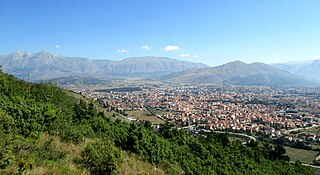
Avezzano is a city and comune with a population of about 42,500 inhabitants, situated in the Abruzzo region, province of L'Aquila, Italy. It is the second most populous municipality in the province and the sixth in the region. Avezzano was documented as an existing urban center in the ninth century. The city was destroyed by the earthquake of 1915. It was rebuilt after the 1944 Allied bombing. The city was decorated with the silver medal for civil merit, an award granted by the Italian Republic.

Casoli a comune and town in the Province of Chieti in the Abruzzo region of Italy. It is situated on a foothill of the Majella mountain, at the base of which runs the Aventino River, tributary of the Sangro. As of 31 December 2004, it had a population of 5,901 and an area of 66 square kilometres (25 sq mi).

Scurcola Marsicana is a comune and town in the province of L'Aquila, in the Abruzzo region of central Italy.

Fara in Sabina, also spelled Fara Sabina, is a comune (municipality) in the Province of Rieti in the Italian region Lazio, located about 40 kilometres (25 mi) northeast of Rome and about 25 kilometres (16 mi) southwest of Rieti.

Montelibretti is a town and comune (municipality) in the Metropolitan City of Rome in the Italian region Lazio, located about 30 kilometres (19 mi) northeast of Rome on the slopes of Monti Sabini.

Sacrofano is a comune (municipality) in the Metropolitan City of Rome in the Italian region Latium, located about 25 kilometres (16 mi) north of Rome. Located near the Monti Sabatini, at the feet of an extinct volcano, it is included in the Regional Park of Veii.
The Castello di Lunghezza is a medieval fortification situated roughly 20 kilometers (12 mi) east of Rome, Italy. It lies in Municipio VIII of Rome, and probably sits on the site of the ancient town of Collatia.
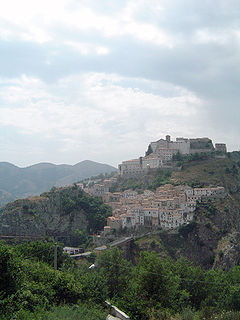
The Castle of Muro Lucano is a castle in the commune of Muro Lucano in the Potenza province of the Basilicata region of southern Italy. It was originally built in the 9th century and parts of it are still inhabited by the Martuscelli family, relatives of Francesco Domenico Lordi who bought the castle in 1830.
Sismano, a little medieval borgo, is a frazione of the Italian commune of Avigliano Umbro, in the province of Terni. Sismano lies 13 km from Todi and 5 km from Avigliano; according to the Italian state census of 2001, Sismano has 17 inhabitants in the densely built historic center and 308 in all.

Castello Orsini-Odescalchi is a castle in Bracciano, in the Province of Rome, Lazio, Italy. It is located on the southern shore of Lake Bracciano. It was built in the 15th century, and combines the functions of a military defence structure and a civilian residence of the feudal lords of the period, the Orsini and Borgia, both papal families. As one of the largest and best-maintained castles in Italy, it also houses a museum; as a centre of cultural events, the Castello has hosted several high-profile weddings like the ones of Tom Cruise/Katie Holmes, Eros Ramazzotti/ Michelle Hunziker, and Petra Ecclestone/James Stunt.

The Castle of Charles V, also known as the Castello di Lecce, is a castle in Lecce, Italy. It was first built in the Middle Ages, and was strengthened by Charles V in 1539, to a design by the architect Gian Giacomo dell’Acaya. To build this fortress two constructions were pulled down: the Chapel of the Trinity and the Monastery of the Benedictine Order of the Saint Cross. The castle did not have only defensive functions, in the 18th century one of its rooms was used as a theatre. From 1870 to 1979 it was used as military district. Nowadays it is the seat of the Cultural Affairs of the township of Lecce, a backdrop for many cultural initiatives. Visitors can remain charmed with the delicate ornaments of the interiors: the capitals and the decorated big room, with imposing big stained glass windows. The rooms of the upstairs are sustained by imposing stone columns. There is a legend linked with this castle: it tells that the family which owned this castle in the 14th century, the Orsini del Balzo family, kept a white bear in the moat of the castle. This animal was a status symbol and, at the same time, it scared prowlers.

Rocca Orsini is a Middle Ages castle in Scurcola Marsicana, Province of L'Aquila (Abruzzo).

Castello di Carsoli is a medieval castle in Carsoli, Province of L'Aquila (Abruzzo), central Italy.
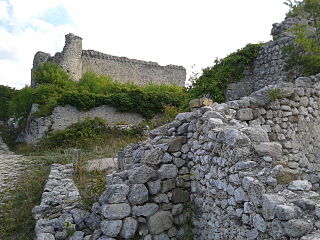
Castello Orsini is a Middle Ages castle in Massa d'Albe, Province of L'Aquila (Abruzzo).

Castello Masciantonio is a Renaissance castle in Casoli, Province of Chieti (Abruzzo).
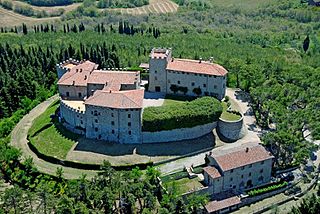
Castello di Montegiove was established in the 13th century in Umbria, Italy. It lies at 627 meters above sea-level, on the border between the old city states of Orvieto and Perugia. The castle continues to operate privately as a family farm and tourist site.
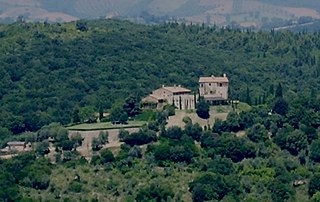
Castello di Vicarello is a medieval castle in Cinigiano, Tuscany, Italy.


